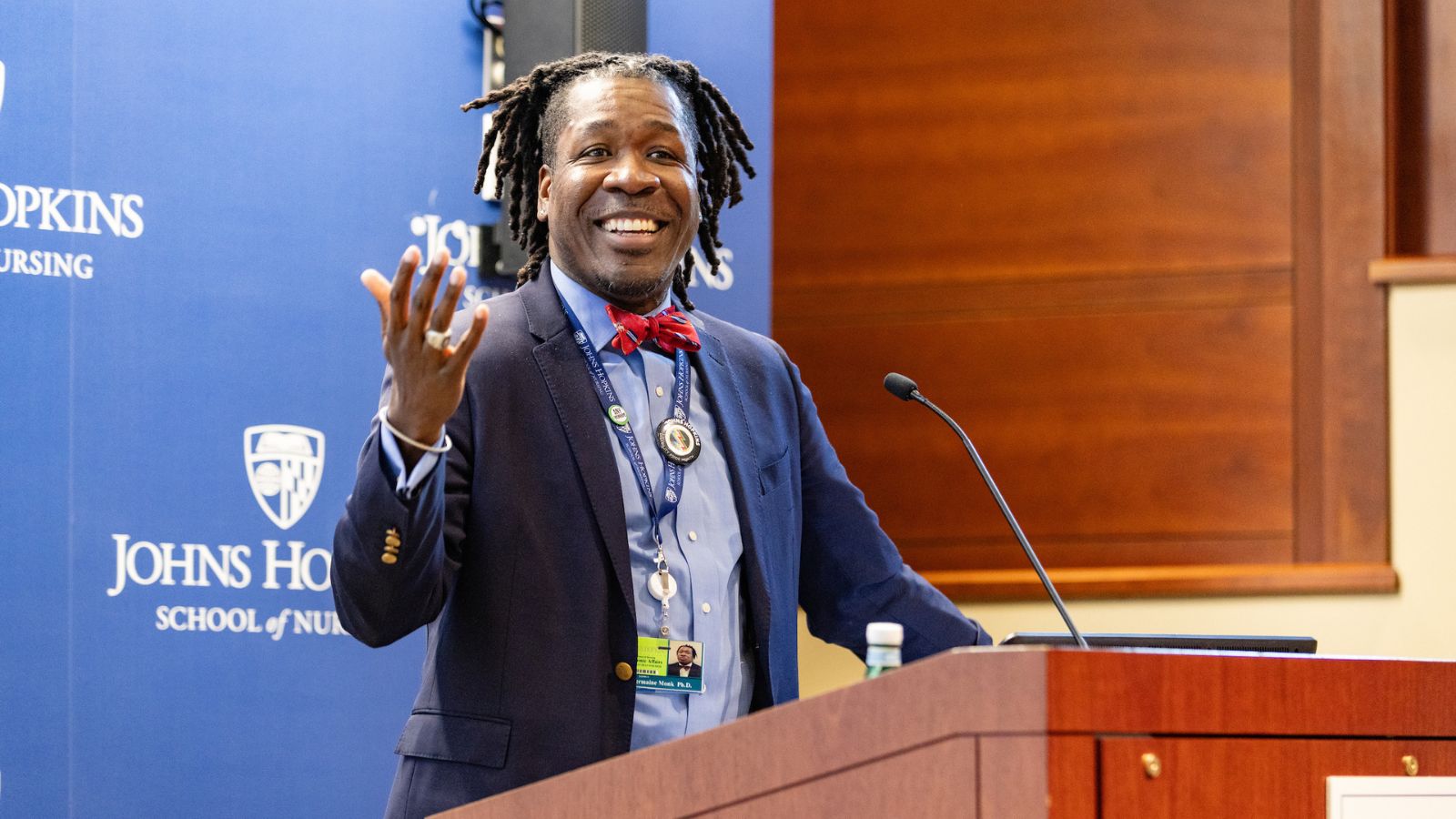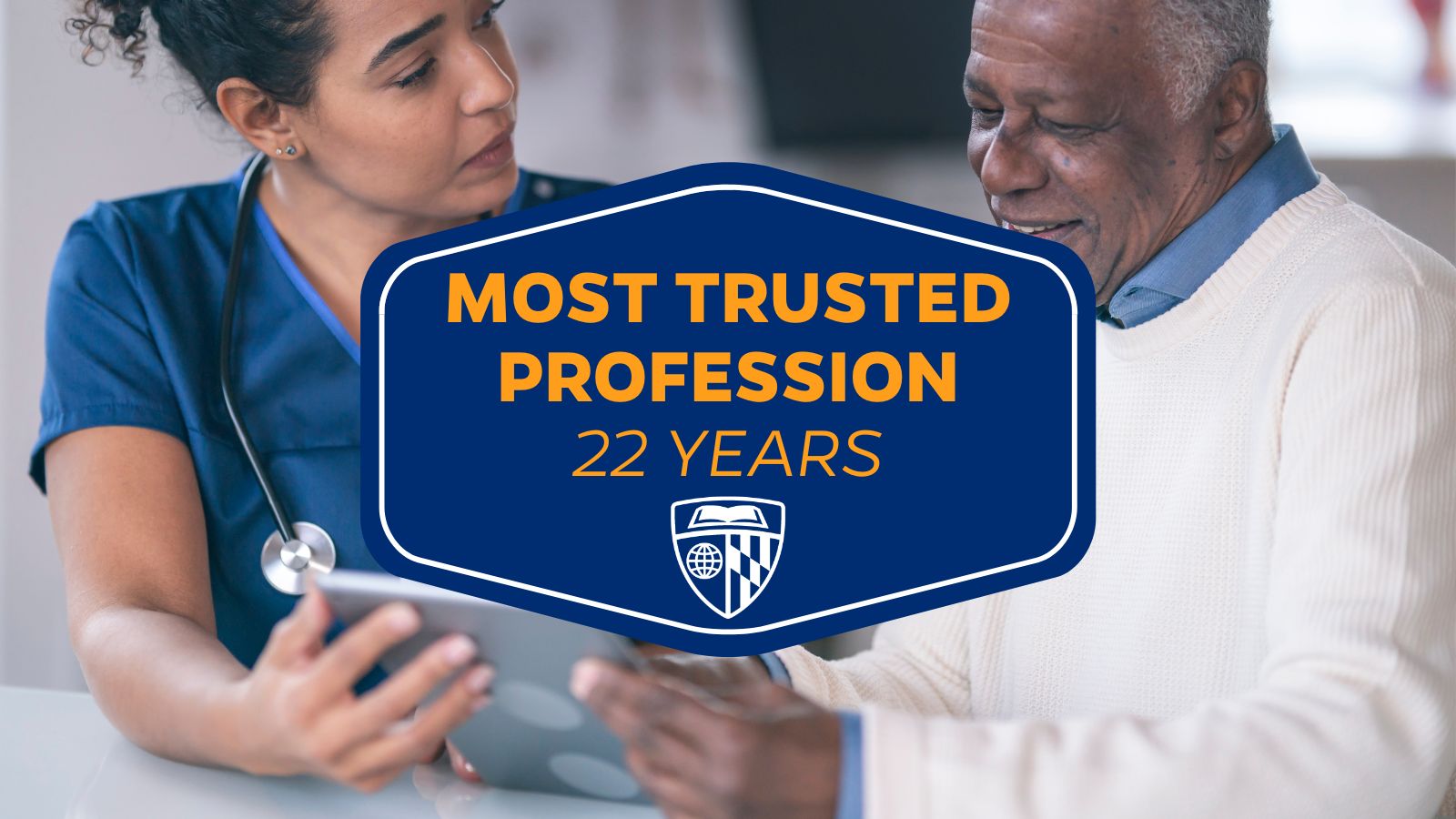By Jennifer L.W. Fink
App for head and neck patients makes it easier for them to help themselves
There has to be a better way.
That’s the thinking that led to the development of an innovative new smartphone app designed to help head and neck cancer patients effectively manage their care.
As a nurse in Johns Hopkins Otolaryngology and Facial Plastics clinic, Maureen Ercole, MSN, RN, often saw patients and families who either forgot or didn’t fully understand the verbal and written self-care instructions given to them by health care providers after surgery, radiation, and chemotherapy. “We knew there was a gap in their care, because people were getting readmitted because they didn’t hydrate adequately or didn’t take care of the wound or lost too much weight due to difficulties swallowing and eating,” Ercole says.
“We knew there was a gap in their care, because people were getting readmitted because they didn’t hydrate adequately or didn’t take care of the wound or lost too much weight due to difficulties swallowing and eating.”
— Maureen Ercole, MSN, RN
Evidence-based interventions such as swallowing exercises have been proven to ameliorate some of the difficulties many patients experience after treatment, but few people consistently perform the exercises. Clearly, the standard written and verbal instruction provided to patients was not the most effective way to encourage the performance of important self-care tasks.
That’s why, three years ago, a team led by Jeremy Richmon, MD, then director of the Head and Neck Surgery Robotic program, began to brainstorm a better way. Together, the multi-disciplinary team —which included Richmon, Ercole, speech language pathologists, radiation oncologists and others—discussed patient needs, the current approach to care, and novel ways to help patients and families manage care at home.
A smartphone app, they realized, would be an ideal way to share info with head and neck cancer patients, many of whom have lost the ability to communicate verbally. An app wouldn’t require oral conversation, and because smartphones have become nearly ubiquitous, information shared in an app would be accessible.
So the team worked with David Klein, chief product officer of Vibrent Health, to develop an app that would serve as a bridge between head and neck cancer patients and the health care team.
The result: Fit Ninja, an app that nudges patients to assess and care for their wounds and do their swallowing exercises. The app includes a communications portal as well, Ercole says.
“When these patients come in, they’re facing a journey that’s about nine months long. Most of them need surgery and they may need chemo and radiation, so they’re dealing with many different groups with overlapping responsibilities. We wanted to make a platform for them to get to the provider who can answer the question,” Ercole says.
The app also allows patients and providers to share visual information. Patients, for example, can access wound care videos. They can take photos of wounds and share them, so providers can quickly assess and initiate treatment for potentially infected wounds. The app even tracks patient weight—an important indicator of overall well-being, particularly in patients who have difficulty eating—via Bluetooth enabled scales.
The Fit Ninja app for head and neck cancer patients went live earlier this year and is currently being tested in small groups of patients. Ercole says she hopes use will soon expand.

 Forging Policy: How Can Doulas Improve Black Maternal Health?
Forging Policy: How Can Doulas Improve Black Maternal Health? No. 1 Rankings for the School of Nursing and a Pipeline to the “Best Jobs”
No. 1 Rankings for the School of Nursing and a Pipeline to the “Best Jobs” You’re Welcome
You’re Welcome Forging Policy: Associate Dean Jermaine Monk and Education After Affirmative Action
Forging Policy: Associate Dean Jermaine Monk and Education After Affirmative Action Nursing Named Most Trusted Profession for 22nd Consecutive Year
Nursing Named Most Trusted Profession for 22nd Consecutive Year





